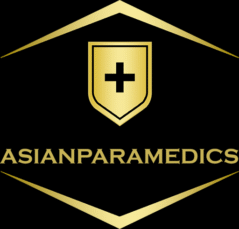This set of 45 multiple-choice questions (MCQs) is designed to help medical professionals and students prepare for the DHA (Dubai Health Authority) exam, specifically focusing on clinical chemistry. The questions cover essential topics such as glucose metabolism, diagnostic criteria for diabetes, test interference, and common analytical methods. This resource is ideal for individuals looking to strengthen their knowledge in clinical laboratory practices and ensure readiness for certification exams in the healthcare field.
- The diagnosis of diabetes mellitus is reliably established by which of the following criteria?
- A. only 1 and 3 are correct
- B. only 2 and 4 are correct
- C. only 1,2, and 3 are correct
- D. 1,2,3 and 4 are correct ✅
- Which of the following statements regarding glucose blood samples is/are correct?
- A. only 1 and 3 are correct
- B. only 2 and 4 are correct
- C. only 1,2, and 3 are correct
- D. 1,2,3 and 4 are correct ✅
- In case of capillary blood sampling, 0.01-0.05 mL of blood are placed in a solution to hemolyze red cells if the glucose determination will be performed using automated analysis systems. Which of the following glycolysis inhibitors are used with hemolyzation solution?
- A. only 1 and 3 are correct
- B. only 2 and 4 are correct
- C. only 1,2, and 3 are correct
- D. 1,2,3 and 4 are correct ✅
- Which of the following statements are correct in relation to the stability of glucose in blood samples?
- A. only 1 and 3 are correct
- B. only 2 and 4 are correct
- C. only 1,2, and 3 are correct
- D. 1,2,3 and 4 are correct ✅
- Which method of determination for glucose is the reference method?
- A. oxidase
- B. dehydrogenase
- C. hexokinase ✅
- D. glucometers
- Among the sugars usually occurring in the blood, which of the following are detected by glucose dehydrogenase method?
- A. only 1 and 3 are correct
- B. only 2 and 4 are correct
- C. only 1,2, and 3 are correct
- D. 1,2,3 and 4 are correct
- In the hexokinase method, which of the following may be a source of methodologic errors?
- A. the addition of maleinimide in a hemolysate
- B. deproteinization using perchloric acid
- C. drug interference ✅
- D. maleinimide inhibits erythrocyte enzymes
- Which of the following are diagnostic significance of glucose determinations in body fluids?
- A. only 1 and 3 are correct
- B. only 2 and 4 are correct
- C. only 1,2, and 3 are correct
- D. 1,2,3 and 4 are correct ✅
- The oral glucose tolerance test will provide valuable results if the following requirements have been met by the patient prior to the test:
- A. only 1 and 3 are correct
- B. only 2 and 4 are correct
- C. only 1,2, and 3 are correct
- D. 1,2,3 and 4 are correct ✅
- In OGTT, a load of 75g of glucose (WHO recommendation) is ingested within:
- A. 5mins
- B. 10 mins
- C. 20 mins
- D. 30mins ✅
- The screening test for gestational diabetes mellitus recommended between 24th to 28th week of gestation requires 50g of glucose dissolved in 200ml of water and slowly drunk. A blood sample is collected after:
- A. 30mins
- B. 60 mins ✅
- C. 90 mins
- D. 120mins
- Gestational diabetes mellitus is present if the following threshold values are obtained:
- A. only 1 and 3 are correct
- B. only 2 and 4 are correct
- C. only 1,2, and 3 are correct
- D. 1,2,3 and 4 are correct ✅
- Which of the following statements regarding glycohemoglobins are correct?
- A. only 1 and 3 are correct
- B. only 2 and 4 are correct
- C. only 1,2, and 3 are correct
- D. 1,2,3 and 4 are correct ✅
- Which of the following are done in C-peptide suppression test?
- A. only 1 and 3 are correct
- B. only 2 and 4 are correct
- C. only 1,2, and 3 are correct
- D. 1,2,3 and 4 are correct ✅
- In glucagon test, determination of glucose insulin, C-peptide and B-hydroxybutyrate are done in sample collected:
- A. prior to the start as well as 1,5,10,15 and 30 mins later.
- B. prior to the start as well as 5,10,15,20 and 30 mins later.
- C. prior to the start as well as 5,10,15, 30 and 60 mins later. ✅
- D. prior to the start as well as 10,15, 30 and 60 mins later.

